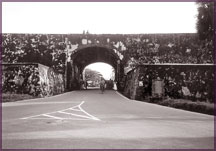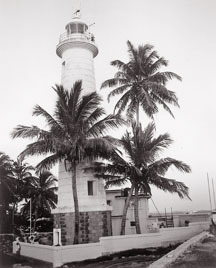How Gaala became Galle
by Ishara Mudugamuwa
Legend has it Galle got her name from the large number of bullock
carts parked within the city. The place was called 'Gaala' which later
became Galle. Galle has a valuable natural harbour. Many years ago
Persians, Arabs, Greeks, Romans, Malays and Indians did business through
the Galle port.
The modern history of Galle begins in 1505 AD when the Portuguese
arrived in Sri Lanka. This was the year when the first Portuguese ship
under Lourenco de Almeda was driven to Galle in a storm.

In 1640 Galle was captured by the Dutch. Then in 1796 the English
took over the city, but they didn't change the Dutch architecture of the
city. Thus the 300 year old Dutch atmosphere is still alive in the city.
The city of Galle is little more than a large town with a busy bus
stand, railway station and market at its heart. Galle was no doubt once
a leading centre for native arts and crafts. Some of them are lace,
ebony, wood carving, tortoise shell decorations and gems.

The Galle fort covers an area of 36 hectares and encloses museums, a
clock tower, churches,a mosque, a light house and many private
dwellings. Though Galle was destroyed by the tsunami in 2004 now the
town is completely rebuilt.
The Rumassala mountain is another attractive sight in the Galle town.
It is located on one side of the Galle port.
This mountain is connected with the legend of Ramayana. It is
believed that a piece had fallen when Lord Hanuman brought the mountain
to Sri Lanka in search of a herb to treat Laxman who was the brother of
Rama.
Galle is a major tourist destination and earns lots of foreign
exchange. The Southern coastal belt is popular among tourists and they
come here mainly from October to April. When we talk about this city we
cannot forget the Galle cricket stadium, which has been recognized
internationally.
A common sight in the evening on the ramparts is people taking a walk
enjoying the breeze from the Indian ocean.
Here is a place to sit and make a wish as the sun sets over the
horizon in a magnificent blaze of colour. If anyone really wants to
spend their holiday in Sri Lanka, a couple of days in Galle should be on
their 'to-do things' list.
[email protected]
|

